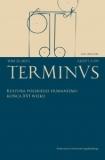Oprawianie jako etap produkcji. O związkach drukarzy, księgarzy i introligatorów
Bookbinding as a Stage of Book Production: On the Relations Among Printers, Booksellers, and Bookbinders
Author(s): Katarzyna Płaszczyńska-HermanSubject(s): Library operations and management, Polish Literature, International relations/trade, 16th Century
Published by: Wydawnictwo Uniwersytetu Jagiellońskiego
Keywords: bookbinding; bound book trade in 16th century Poland;
Summary/Abstract: This work discusses the trade of bound books in 16th century Poland. Its first part presents some insights into this topic based on extant archival sources, including earlier studies. In the centuries following the invention of the printing press, books were generally sold in the form of loose sheets, and binding was to be commissioned by the buyer. Those trading in books – booksellers, printers and bookbinders – could also have the books bound before offering them for sale. So far this topic has not received broader attention, though numerous remarks about books being bound for sale appeared e.g. in the works of Monika Jaglarz (Księgarstwo krakowskie XVI wieku, Kraków 2004) and Edward Różycki (Z dziejów książki we Lwowie w XVII wieku, Katowice 1991). The primary sources of information are here 16th century booksellers’ inventories, preserved in the Krakow City Archives, such as those of Piotr Reismoller, Maciej Szarfenberg and Zacheusz Kessner bookshops. Next to unbound copies, those inventories list between 10 and 20 percent of bound books (ligata). There are also records of cooperation between bookbinders and booksellers, who probably commissioned the binding of some copies for sale (e.g. contracts between the publisher and bookseller Jan Haller, and the bookbinders Piotr Walde and Henryk Süssmund). Such cooperation is also evidenced by large quantities of waste paper used in the bindings, coming from a single printing house, which hints at collaboration of the printer Łazarz Andrysowicz and the bookbinder Jerzy Moeller. Traces of bound book trade have been found not only in Krakow, but also in Lwów, Poznań and Warszawa. Bound books were also sold by bookbinders, as witnessed by the 16th century inventories of Maciej Przywilcki and Stefan Terepetka, listing the prices and types of bindings of the copies being offered for sale. The second part of this work presents two copies of the Polish translation of the Bible, published in Krakow in 1599, which had probably been bound before sale. Of special interest among the decorations on the bindings are the titles Biblia impressed with a woodcut block, an empty oval cartouche with room for a coat of arms, and a quote from the Book of Joshua, pressed onto the front cover.
Journal: TERMINUS
- Issue Year: 23/2021
- Issue No: 2 (59)
- Page Range: 135-155
- Page Count: 21
- Language: Polish

